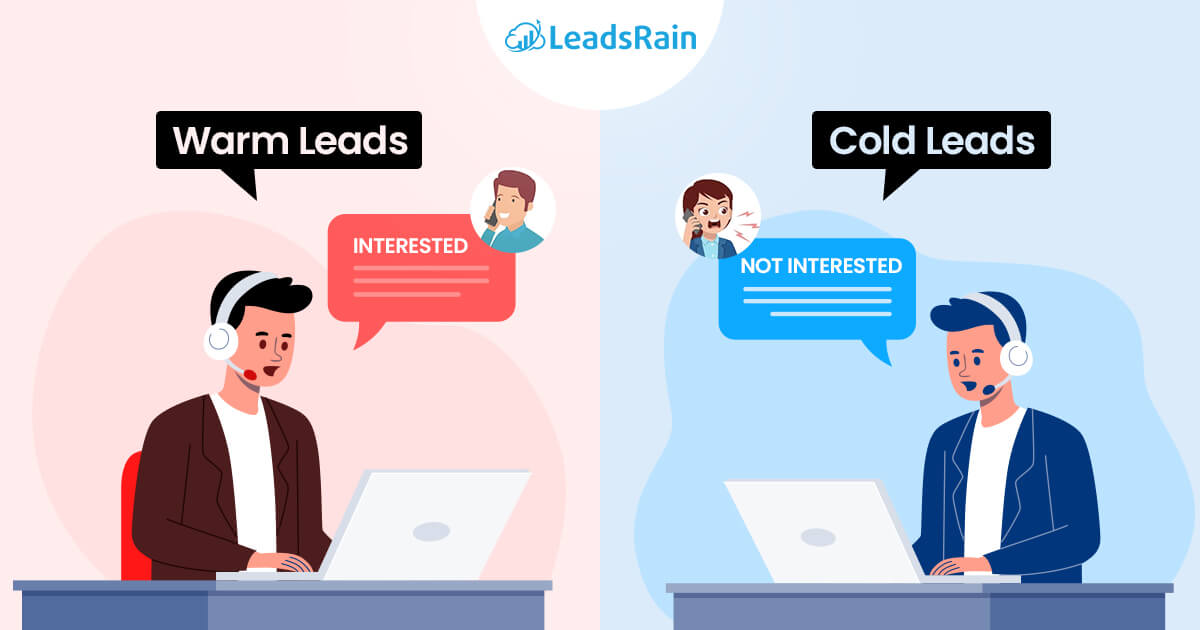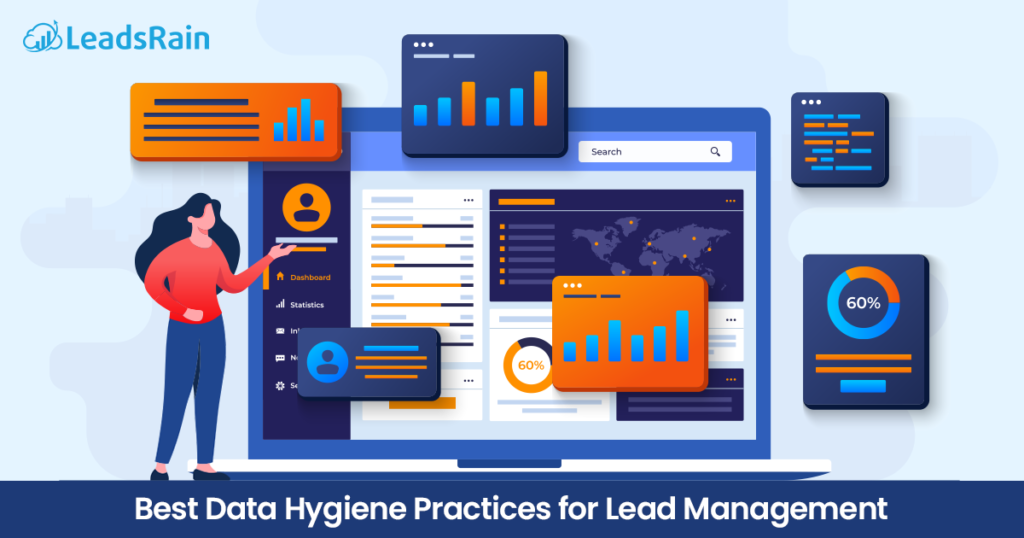Today, we’re diving into the differences between warm leads and cold leads. In the realm of sales and marketing, understanding these distinctions is crucial for success. Well, do you know? Understanding these differences, businesses can fine-tune their strategies, saving time, and resources, and ultimately boosting their bottom line.
What are Warm Leads?
Warm leads are potential customers who have already shown some level of interest in a product or service. Warm leads could include individuals who have signed up for a newsletter, attended a webinar, or interacted with a company’s social media posts. These leads are considered warm because there is an existing connection or interest, making them easier to nurture and convert into sales.
Businesses often focus on nurturing warm leads as they have a higher chance of conversion than cold leads. To effectively utilize warm leads, businesses often employ strategies such as personalized follow-up emails, targeted advertisements, or exclusive discounts or promotions.
When it comes to identifying warm leads, several key indicators must be considered. Firstly, look for prospects who have actively engaged with your brand, such as website visitors, social media interactions, or email engagement. Referrals from satisfied customers also signal warm leads.
Assess the demographic fit of leads, considering how closely they align with your target audience. Additionally, utilizing CRM tools and lead-scoring techniques can help prioritize leads based on engagement and fit. By focusing on these indicators, you can effectively identify warm leads with a higher likelihood of conversion.
What are Cold Leads?
Cold leads are potential customers who have shown little or no prior interest in a product or service offered by a business. These leads are often obtained through methods like cold calling, purchasing contact lists, or general advertising to a broad audience.
Unlike warm leads, cold leads have not yet shown any engagement or indication of wanting to make a purchase. They might be unfamiliar with the brand or simply not actively looking for the product or service at that moment. The goal is to capture the attention of cold leads, educate them about the product or service, and showcase the value that can address their pain points.
Identifying cold leads requires paying attention to certain indicators. Cold leads typically exhibit minimal engagement with your brand, such as low website visits, lack of interaction on social media, or limited response to your marketing efforts.
Additionally, leads that do not match your target audience demographics, have a different industry focus, or lack a clear need for your offerings can also be considered cold leads. By recognizing these signs, you can easily focus your efforts on nurturing these leads.
What are the Major Differences between Warm and Cold Leads?
Understanding these differences between cold leads and warm leads helps you prioritize your efforts and allocate resources effectively. So, let’s discover this ten point of differences between cold leads and warm leads;
Engagement Level
Warm leads demonstrate a higher level of engagement with your brand actively interacting with your website or subscribing to your newsletters.
Cold leads, on the other hand, exhibit minimal or no engagement and a lack of a direct connection with your brand.
The point of difference in engagement level between cold and warm leads is important because it helps businesses prioritize their efforts and resources.
Relationship
Warm leads often have an existing relationship with your brand, such as being referred by satisfied customers or being previous customers themselves. These interactions have helped establish a level of familiarity and trust, creating a foundation for a stronger relationship.
Cold leads, in contrast, lack any direct relationship or history with your brand and require more effort to establish trust. Building a relationship with cold leads requires time and effort to nurture their interest and trust.
Interest and Intent
Warm leads demonstrate a genuine interest in your products or services and express intent to make a purchase or engage in a business relationship. They may have actively sought out information about your offerings, engaged with your content, or expressed interest in specific products or services.
Cold leads may not have shown specific interest or intent and require more nurturing to generate interest. They may have come across your brand through general marketing efforts or stumbled upon your website, but they have not yet demonstrated a strong intent to engage or make a purchase.
Trust and Familiarity
Warm leads have higher trust and familiarity with your brand, often gained through positive experiences or recommendations. They already have a level of familiarity with your brand and may require less introductory information.
Cold leads, on the other hand, lack this level of trust and familiarity and require more effort to establish trust. As a result, you’ll need to invest more effort in educating them about who you are, what you do, and how you can address their needs.
Conversion Probability
Warm leads have a higher likelihood of conversion compared to cold leads. Their active engagement, existing relationships, and expressed interest indicate a readiness to take the next step.
Cold leads, have a lower conversion probability and require additional effort to build trust and generate interest. They typically take longer to convert into paying customers. Since they are in the early stages of the buyer’s journey, they need more time to become aware of your brand and understand your offerings.
Personalization and Targeting
Warm leads often provide more information about themselves, allowing for personalized communication and tailored marketing efforts. With their existing familiarity, require more precise targeting to nurture their interest and guide them through the buyer’s journey.
Cold leads lack this level of personalization and require more strategic and precise targeting to capture their attention. They require a broader approach to generate initial interest. Casting a wider net and reaching out to a larger audience can help capture their attention.
Response Rates
Warm leads generally have higher response rates as they already have some level of familiarity with your brand and are more likely to engage in conversations.
Cold leads, on the other hand, tend to have lower response rates as they had little to no prior interaction with your brand or product. They may be less likely to respond to your initial outreach or marketing efforts immediately.
Cost-effectiveness
Warm leads tend to be more cost-effective as they require fewer resources and effort to convert. They often yield a higher return on investment (ROI) compared to cold leads.
Cold leads often require a higher investment in time, marketing campaigns, and lead nurturing activities. They may require a longer nurturing period and a larger investment before yielding significant returns.
Repeat Business Potential
Warm leads, often existing customers or referred leads, are more likely to repeat business. They are more likely to become loyal customers and generate ongoing revenue. They have a shorter time frame for potential repeat business and loyalty.
Cold leads, being less familiar with your brand, may require more effort to convert and may not exhibit the same level of repeat business potential. They may require a longer time to convert into repeat customers and establish loyalty.
Timeframe
Warm leads are generally closer to the point of conversion and require less time and effort to move through the sales funnel. They generally have a shorter conversion time frame due to their existing interest.
Cold leads require more time and nurturing to build interest and trust. Moving them through the sales funnel may require additional interactions, follow-ups, and demonstrations.
Unlocking the Power of Leads: Cold vs. Warm
Did you know that not all leads are created equal? Discover the astounding differences between cold leads and warm leads…..

Various sources of Cold Leads and Warm Leads
Understanding the differences between cold and warm leads and utilizing various sources to generate both types can help businesses effectively expand their customer base and drive sales.
Sources of Cold leads
Purchased lists. Companies may purchase lists of contact information from third-party sources to reach potential customers who have not yet engaged with their brand. However, these leads may require more effort to convert.
Cold calling and telemarketing. Initiating outbound calls to individuals or businesses who have not expressed any prior interest is a traditional method of reaching cold leads, though it requires careful targeting to be effective.
Email marketing campaigns. Sending targeted email campaigns to individuals who have not yet interacted with your brand can help generate interest and convert cold leads into warm leads. Building a strong mailing list is essential for this approach.
Paid advertising. Running display ads, search engine ads, or social media ads can help generate awareness and attract potential customers who may not be familiar with your brand.
Direct outreach. Reaching out to potential customers through personalized emails or messages on platforms like Linked In can introduce your brand to cold leads and initiate conversations.
Sources of Warm leads
Referrals. When satisfied customers recommend your product or service to others, these referred leads often come with a higher level of trust and interest.
Direct mail. Sending personalized and targeted direct mail campaigns to potential customers, based on segmentation and research, can yield warm leads who are interested in your offerings.
Live chat on a website. Implementing live chat functionality on your website allows potential customers to engage with your brand in real-time, providing an opportunity to convert them into warm leads.
Content marketing. Providing valuable content through blog posts, videos, podcasts or ebooks can attract potential customers who are interested in your industry or specific topics related to your offering.
Previous customers. Customers who have purchased from you and had a positive experience can be considered warm leads for potential future transactions. Keeping in touch with them can lead to repeat business.
Conclusion
A successful lead generation and conversion strategy is a dedicated balance between reaching out to new prospects and nurturing existing ones. So, as you embark on your quest for lead generation dominance, keep these differences in mind. Now, armed with this knowledge, go forth and conquer the world of leads! Good luck, and may your warm leads be ever responsive and your cold leads warm up to your offerings over time. Happy converting!




